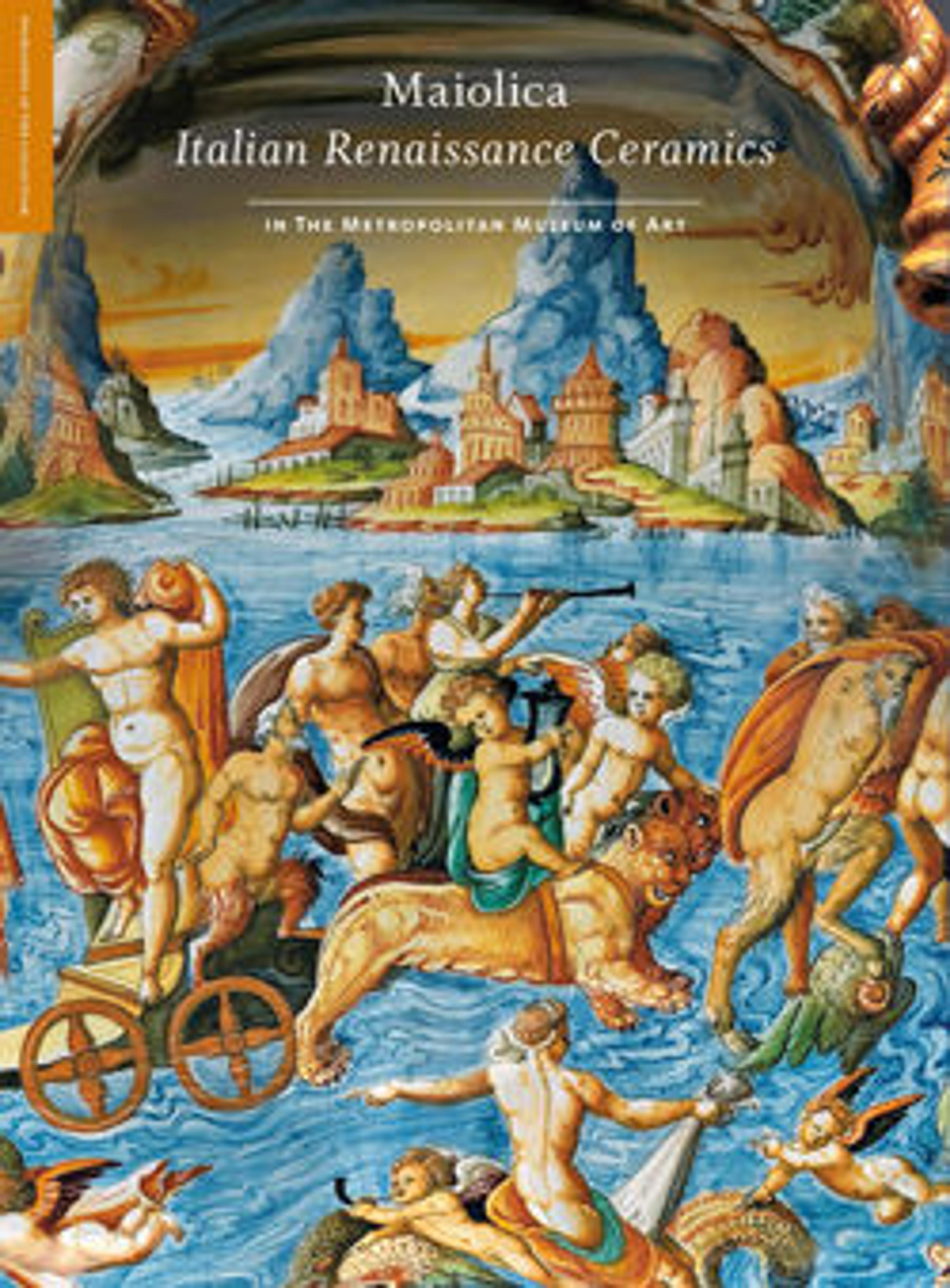Sculptural group with The Lamentation Over the Dead Christ
This work is the largest and most spectacular surviving example of sculptural maiolica from the Renaissance. The standing figures are set in high relief against a landscape of rocky yellow earth and green grass. Conceived as an altarpiece, the scene depicts the moment of grief and reflection after Christ’s body is taken down from the cross. It allowed the artist—a highly skilled potter—to explore the expressive potential of his medium.
Although this work surpasses in ambition many earthenware vessels from the period, it was made with traditional maiolica techniques. Therefore, the color palette is limited due to the chemical properties of the pigments. The patterns on the mourners’ garments are related to contemporary European fashion but also recall the energetic Spanish-influenced ornament found on many objects in this exhibition.
Although this work surpasses in ambition many earthenware vessels from the period, it was made with traditional maiolica techniques. Therefore, the color palette is limited due to the chemical properties of the pigments. The patterns on the mourners’ garments are related to contemporary European fashion but also recall the energetic Spanish-influenced ornament found on many objects in this exhibition.
Artwork Details
- Title: Sculptural group with The Lamentation Over the Dead Christ
- Date: 1487
- Culture: Eastern Central Italian, Emilia-Romagna or the Marche
- Medium: Maiolica (tin-glazed earthenware)
- Dimensions: Overall: 29 1/2 x 64 x 12in. (74.9 x 162.6 x 30.5cm);
(a) confirmed: 9 1/8 × 28 5/8 × 6 3/4 in., 30.3 lb. (23.2 × 72.7 × 17.1 cm, 13.7 kg);
(b) confirmed: 27 3/4 in., 54.1 lb. (70.5 cm, 24.5 kg);
(c) confirmed: 28 5/8 in., 31.9 lb. (72.7 cm, 14.4 kg);
(d) confirmed: 29 1/4 in., 33.9 lb. (74.3 cm, 15.4 kg);
(e) confirmed: 27 1/2 in., 32.9 lb. (69.9 cm, 14.9 kg);
(f) confirmed: 28 5/8 in., 36 lb. (72.7 cm, 16.4 kg);
(g) confirmed: 8 5/8 in. (21.9 cm)
(h) confirmed: 7 7/8 in. (20 cm) - Classification: Ceramics-Pottery
- Credit Line: Rogers Fund, 1904
- Object Number: 04.26a–h
- Curatorial Department: European Sculpture and Decorative Arts
More Artwork
Research Resources
The Met provides unparalleled resources for research and welcomes an international community of students and scholars. The Met's Open Access API is where creators and researchers can connect to the The Met collection. Open Access data and public domain images are available for unrestricted commercial and noncommercial use without permission or fee.
To request images under copyright and other restrictions, please use this Image Request form.
Feedback
We continue to research and examine historical and cultural context for objects in The Met collection. If you have comments or questions about this object record, please complete and submit this form. The Museum looks forward to receiving your comments.
